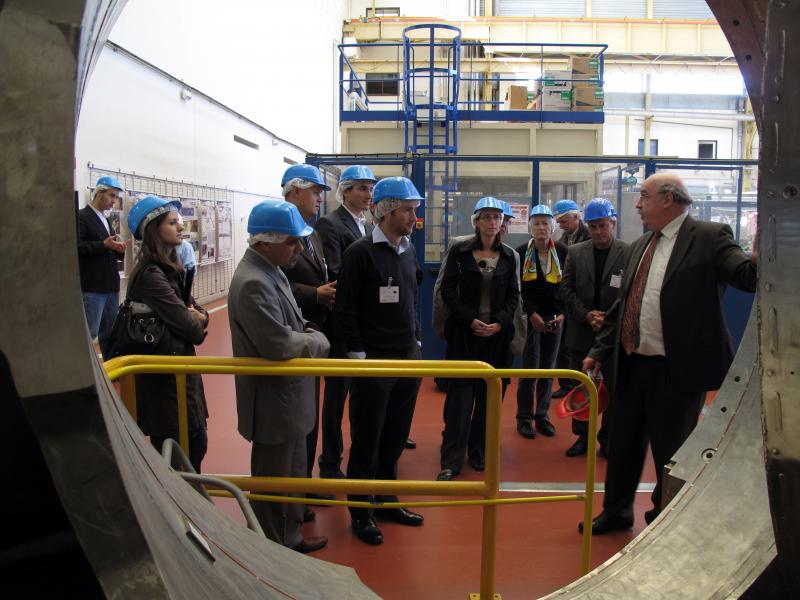The CEA researches for a low-carbon economy
In 2010, the CEA changed its name and became the “Alternative Energies and Atomic Energy Commission”. The objective is to better highlight researches done for many years in the field of low-carbon energies: nuclear power in accordance with its original mission, but also solar, hydrogen production, fuel cells, storage of electricity for housing and transportation, conversion of biomass to bio-fuels. The proposed visit aimed to illustrate some of these aspects.
During the dinner-debate on Monday 27 Sept, M. Hervé Bernard, deputy CEO of the CEA, presented a general survey of the strategy of CEA and its projects for the years to come.
On Thursday 28, the visit to the Cadarache Centre was organized on three issues:
• nuclear fission,
• controlled thermonuclear fusion
• renewable energies.
It was complemented by a guided tour of the facilities, including the ITER site and the Jules Horowitz Reactor site. Special insight were provided on the many ongoing projects (research reactors, nuclear wastes management, non-food bio fuels, solar energy).
Programme of the visit
27 September 2010
Dinner-debate with Guest speaker: Hervé Bernard, deputy CEO of the CEA
CEA researches for a low-carbon economy
28 SEPTEMBER 2010
Presentation of the CEA Cadarache Centre
Fission: Visit of the Jules Horowitz Reactor. This reactor will offer modern irradiation experimental capabilities for studying material & fuel behavior under irradiation
http://www-cadarache.cea.fr/rjh/index.html
Fusion: Visit of the Tore-Supra Tokamak, one of the largest tokamak in the world. This fusion experiment uses superconducting coils and aimed particularly at demonstrating long pulse tokamak operation.
http://www-fusion-magnetique.cea.fr/gb/cea/ts/ts.htm
Fusion: Visit of ITER (International Thermonuclear Experimental Reactor)
http://www.iter.org/
New technologies for energy: biomass
Visit of a non-food biofuel laboratory (Institute of Environmental Biology and Biotechnology – IBEB): study of hydrogen production mechanisms or of lipid bio-carburant through micro algae.
http://www-dsv.cea.fr/en/institutes/institute-of-environmental-biology-and-biotechnology-ibeb
New technologies for energy: solar activities
Solar energy research concentrates on habitat heating (components, integration into building plans) and on electricity production using photovoltaic modules (connections to the grid, isolated dwellings, pumping and water treatment…)
http://www-cadarache.cea.fr/gb/activites/NTE/index.php
Fission: Presentation of fission European activities – LECA STAR. This facility is a hot laboratory devoted to studies on irradiated fuels.
http://nucleaire-saclay.cea.fr/Phocea/Vie_des_labos/Ast/ast_visu.php?id_ast=138



